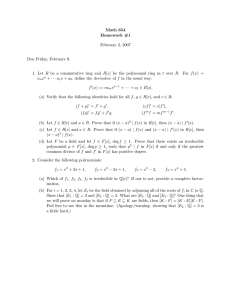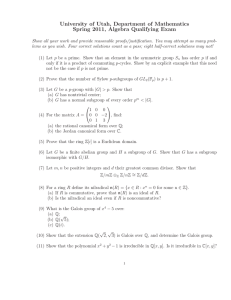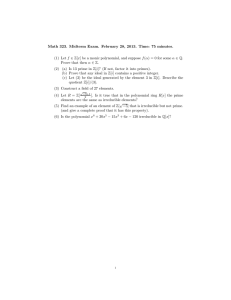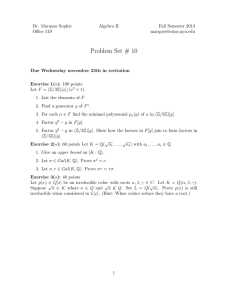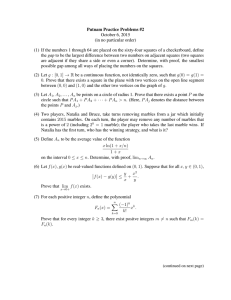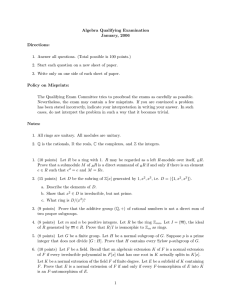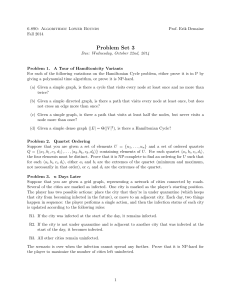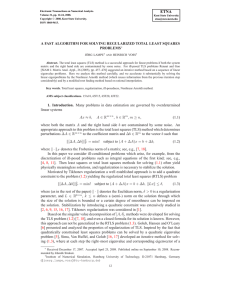University of Utah, Department of Mathematics January 2013, Algebra Qualifying Exam
advertisement
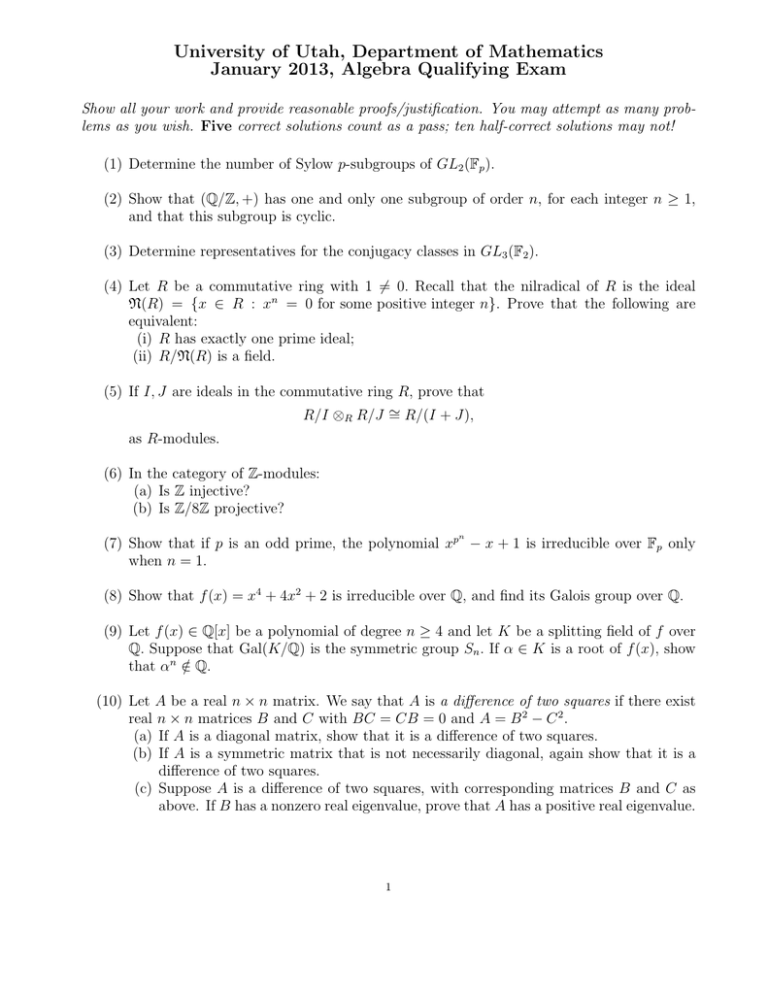
University of Utah, Department of Mathematics
January 2013, Algebra Qualifying Exam
Show all your work and provide reasonable proofs/justification. You may attempt as many problems as you wish. Five correct solutions count as a pass; ten half-correct solutions may not!
(1) Determine the number of Sylow p-subgroups of GL2 (Fp ).
(2) Show that (Q/Z, +) has one and only one subgroup of order n, for each integer n ≥ 1,
and that this subgroup is cyclic.
(3) Determine representatives for the conjugacy classes in GL3 (F2 ).
(4) Let R be a commutative ring with 1 6= 0. Recall that the nilradical of R is the ideal
N(R) = {x ∈ R : xn = 0 for some positive integer n}. Prove that the following are
equivalent:
(i) R has exactly one prime ideal;
(ii) R/N(R) is a field.
(5) If I, J are ideals in the commutative ring R, prove that
R/I ⊗R R/J ∼
= R/(I + J),
as R-modules.
(6) In the category of Z-modules:
(a) Is Z injective?
(b) Is Z/8Z projective?
n
(7) Show that if p is an odd prime, the polynomial xp − x + 1 is irreducible over Fp only
when n = 1.
(8) Show that f (x) = x4 + 4x2 + 2 is irreducible over Q, and find its Galois group over Q.
(9) Let f (x) ∈ Q[x] be a polynomial of degree n ≥ 4 and let K be a splitting field of f over
Q. Suppose that Gal(K/Q) is the symmetric group Sn . If α ∈ K is a root of f (x), show
that αn ∈
/ Q.
(10) Let A be a real n × n matrix. We say that A is a difference of two squares if there exist
real n × n matrices B and C with BC = CB = 0 and A = B 2 − C 2 .
(a) If A is a diagonal matrix, show that it is a difference of two squares.
(b) If A is a symmetric matrix that is not necessarily diagonal, again show that it is a
difference of two squares.
(c) Suppose A is a difference of two squares, with corresponding matrices B and C as
above. If B has a nonzero real eigenvalue, prove that A has a positive real eigenvalue.
1
